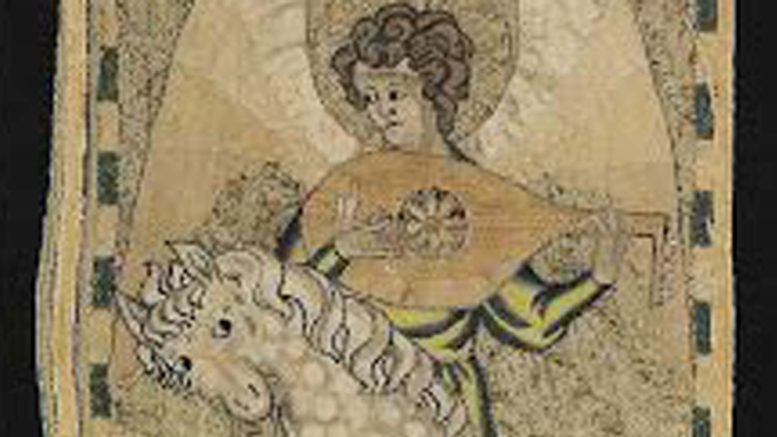You must go and see Opus Anglicanum: Masterpieces of English Medieval Embroidery.
Staged at the V&A, and open until 5 February, it showcases the work of largely anonymous embroiderers in London some 700 years ago. Most of the pieces on show are church vestments whose pictures tell stories of Christ and the saints – which feel a long way away from 21st century London. And yet, the pictures painted with a needle so many years ago touch you and stay with you after you leave the exhibition.
The most famous piece made by English embroiderers is actually incorrectly named – the Bayeux Tapestry, made around 1070 in Kent, 200 feet long and depicting the Battle of Hastings in 1066.
The pieces in the V&A exhibition were made later and are much more elaborate. They use techniques like split stitch, where a thin linen thread is applied in tiny stitches, drawing and painting a face that you feel you could recognise if you saw the person in the flesh. Watch a V&A video showing how it is done
On BBC4, a documentary titled Fabric of Britain – The Wonder of Embroidery provided a brilliant introduction to the topic. Unfortunately, it is no longer on iPlayer.
By the way, another programme in the three-part Fabric of Britain documentary series is entitled: Knitting’s Golden Age, the years from 1920 to 1980. Beginning with Crown Prince Edward’s famous taste for Fair Isle jumpers to Gyles Brandreth’s quote: “Probably everything that’s gone wrong with the world has come about with the decline of knitting. And now that knitting is back everything is going to be grand again.”
Let’s stitch to that!
